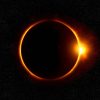The Eclipse Helps Us Understand the Sun's Magnetic Field
If you haven’t heard by now, there will be a total solar eclipse occurring Monday, August 21st. The Great American Eclipse will be viewable across the country at different times depending on your location. You can see a full map and times of full obscurity here. But what exactly happens during a full eclipse?
What Happens During an Eclipse?
An eclipse occurs when one astronomical body moves into the shadow of another. In the case of the eclipse on the 21st, the moon will move in between the Sun and the Earth, casting a shadow over a portion of the Earth for about three hours, making this a solar eclipse. Total solar eclipses occur once every 18 months on average but partial solar eclipses occur around twice a year.
As the moon crosses in front of the sun, a glowing halo appears around the edges of the moon. This is the sun’s corona, an area that many scientists still struggle to understand. Scientists who want to observe the corona can do so without an eclipse but the tools to do this are not always reliable.
With the sun obscured, the solar winds constantly blowing around the sun can be observed. Combined with the earth’s atmosphere and magnetic field, the solar winds are responsible for the auroras and “space weather” or geomagnetic disturbances that disrupt satellites, communication, and the power grid.
Heating Up
While the body of the sun itself hovers around 6,000 K, the sun’s corona takes the cake at around 1,000,000 K. Why is the sun’s atmosphere so much hotter than the surface? While scientists aren’t entirely sure, they believe it has something to do with magnetic fields. As a rotating ball of charged particles, the sun can store up massive amounts of energy that occasionally gets released. While this release of stored energy seems to be related to the sunspot cycle, is it what feeds the flaming tendrils of the sun’s corona?
We’re very excited to view the eclipse and to hear what new information scientists are able to glean from this solar eclipse. Hopefully, they will find a better understanding of the corona and how it plays into the earth’s magnetic field.
Will you be viewing the eclipse? Make sure not to stare directly into it without proper eye protection. Interested in staying up to date on all the eclipse-related findings? Keep your eyes on our News & How-To’s section! Our magnet updates are sure to eclipse all other news. (We’re sorry. We’ll see ourselves out.)

